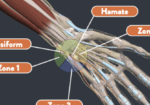Best Live Continuing Education Courses for Occupational Therapists
Filed under Uncategorized
Introduction to Live Continuing Education for OTs
Occupational therapy is a constantly evolving field, and professionals must stay ahead of the curve to provide the best patient care. One of the most effective ways to grow as a practitioner is by taking live continuing education courses for occupational therapists. These courses not only fulfill state licensure requirements but also provide opportunities to sharpen clinical skills, expand knowledge, and connect with fellow professionals.
Unlike pre-recorded or self-paced programs, live CEU courses bring interactive learning experiences to the forefront. Through real-time discussions, hands-on workshops, and direct access to instructors, OTs gain practical insights that can be applied immediately in practice.

Why Continuing Education is Essential for Occupational Therapists
Maintaining Professional Licensure
Every state in the U.S. requires occupational therapists to complete a certain number of continuing education units (CEUs) to maintain their license. Live courses are often pre-approved by state boards and professional associations like the American Occupational Therapy Association (AOTA), making them a reliable choice for meeting these requirements.
Expanding Clinical Skills
Healthcare is dynamic, and OTs must keep up with emerging therapeutic techniques, new technologies, and evolving patient needs. From neurological rehabilitation to pediatric care, live CEU sessions provide up-to-date training directly from leading experts in the field.
Enhancing Patient Outcomes
Ultimately, continuing education benefits patients. By learning the latest evidence-based strategies, OTs can offer improved interventions that enhance independence, reduce risks, and promote overall quality of life.
Live vs. Online Self-Paced CEUs: Which is Better?
Benefits of Live Continuing Education Courses
- Real-time interaction with instructors
- Opportunities to ask questions and receive immediate feedback
- Hands-on skill practice through workshops
- Networking with colleagues across specialties
Drawbacks of Self-Paced Courses
While convenient, self-paced courses may lack interactive components and practical applications. Learners can feel isolated, and it’s easy to procrastinate without structured deadlines.
Live courses, on the other hand, encourage accountability and deeper engagement.
Popular Topics in Live CEU Courses for OTs
CRPS treatment
Courses cover Complex Regional Pain Syndrome treatment and techniques to relieve symptoms.
Pediatric Occupational Therapy
Focus areas include sensory integration, developmental milestones, and school-based interventions.
Geriatric Care and Fall Prevention
With an aging population, OTs are in high demand to assist with mobility, balance training, and adaptive equipment use.
Mental Health in OT Practice
More courses are focusing on occupational therapy’s role in stress management, coping strategies, and lifestyle redesign for mental well-being.
Top Accredited Providers Offering Live CEU Courses
American Occupational Therapy Association (AOTA)
AOTA hosts annual conferences, live webinars, and specialty workshops accredited nationwide.
Hand Therapy Academy
Known for its interactive live webinars and large library of OT-specific CEU courses.
State-Specific OT Associations
Many states host regional conferences and workshops tailored to local licensure requirements.
How to Choose the Right Live CEU Course
- Accreditation and CEU Approval – Always check if the course is AOTA-approved or recognized by your state board.
- Instructor Expertise and Reputation – Choose courses taught by seasoned clinicians with proven expertise.
- Relevance to Your Practice Area – Focus on courses aligned with your work setting—whether it’s pediatrics, geriatrics, or acute care.
The Cost of Live Continuing Education Courses
Average Pricing for CEUs
Live CEU courses typically range from $50–$300 per session, depending on the provider and length.
Membership Discounts and Bundles
Platforms like handtherapyacademy.com offer unlimited CEUs for a flat annual fee.
Employer-Sponsored CE Opportunities
Many hospitals, clinics, and schools provide reimbursement or stipends for continuing education. Always check with your HR department.
Tips for Making the Most of Live CEU Courses
- Networking with Peers – Build connections that may lead to collaboration and career opportunities.
- Applying Knowledge Immediately – Implement new strategies with patients as soon as possible.
- Tracking CE Credits for Licensure – Use apps or spreadsheets to log completed courses and certificates.
Frequently Asked Questions (FAQs)
1. What counts as live continuing education for OTs?
Live webinars, workshops, and conferences where participants interact in real-time.
2. How many CEUs do OTs need per year?
Requirements vary by state, but most require 12–24 hours every 1–2 years.
3. Are live CEU courses more valuable than recorded ones?
Yes, because they offer interactive learning, feedback, and hands-on practice.
4. Can live CEUs be completed online?
Absolutely! Many providers offer live-streamed webinars approved for CE credit.
5. Do employers pay for OT CEU courses?
Many healthcare organizations cover costs or reimburse OTs for required CEUs.
Conclusion: Elevating Your OT Career with Live CEUs
Investing in live continuing education courses for occupational therapists is more than a licensure requirement—it’s a professional commitment to excellence. By engaging with real-time learning, OTs can sharpen clinical skills, stay ahead of industry trends, and improve patient outcomes. Whether through AOTA conferences, Hand Therapy Academy webinars, or state association workshops, the opportunities are endless.
More To Read
Handlebar Palsy also known as Ulnar Nerve Compression
Handlebar Palsy also known as Ulnar Nerve Compression Handlebar palsy, also known as ulnar nerve compression, is a condition commonly experienced by cyclists due to prolonged pressure on the ulnar nerve at the wrist in an area called Guyon’s Canal. This pressure can occur from putting pressure on the handlebars or gripping the handlebars tightly. …
Read MoreWound Healing in Hand Therapy
By: Maddie Mott Wound healing (healing hand therapy) involves a complex series of interactions between different cell types, cytokine mediators, and the extracellular matrix with its four basic stages including hemostasis, inflammation, proliferation, and remodeling (Mackay & Miller, 2003). Because successful wound healing requires adequate blood and nutrients to be supplied to the site of…
Read MoreScar Wars: Scar Management Techniques
We will briefly discuss Scar Management Options and Techniques
Read MoreA Hand Therapist’s Role in Nutrition Education for Wound Healing
By Brittany Day Role of nutrition in wound healing Nutrition plays an important function in the biological factors that contribute to normal wound healing (wound care nutrition). Patients without nutrient dense diets may experience diminished cell production, collagen synthesis, and wound contraction. There is sparse scientific evidence that explores the exact science behind nutrition and…
Read MoreSign-up to Get Updates Straight to Your Inbox!
Sign up with us and we will send you regular blog posts on everything hand therapy, notices every time we upload new videos and tutorials, along with handout, protocols, and other useful information.






